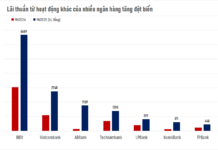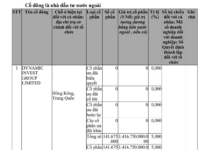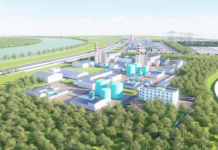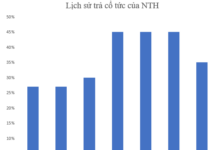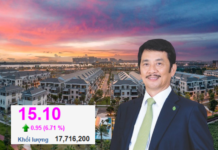
Ms. Do Thu Hang, Senior Director, Advisory and Research Department, Savills Hanoi.
This is an excerpt from Ms. Do Thu Hang, Senior Director, Advisory and Research Department, Savills Hanoi, sharing with MarketTimes.
MarketTimes:
Ms. Hang, how does Savills assess the real estate market in Vietnam as of the end of 2025? What is the most notable point compared to the same period last year?
Ms. Do Thu Hang: By Q3/2025, in Hanoi alone, we observe that the market maintains positive signals. These positive signals are reflected in the good growth rates of both apartment and low-rise housing sales.
Specifically, in the first nine months, the low-rise housing market reached 84% of the total volume in 2024. For the apartment market, the figure reached 20,000 units, while the total for 2024 was 30,000 units. This indicates that overall, Q3 is performing well.
A notable point is the ongoing efforts to address supply imbalances to bring more affordable products to the market. The supply of mid-range apartments (Class B) continues to dominate the market share.
Even throughout 2025, the market is forecasted to remain robust in terms of demand. Thanks to improved transportation access, additional supply will be resolved through local pilot developments and infrastructure enhancements in new areas. Notable examples in Hanoi include the Dong Anh – Me Linh (old) area, as well as regions in the south or east.
Currently, apartment prices in areas outside Hanoi are low, even 40% lower than prices in Hanoi, indicating many positive dynamics and prospects for the Hanoi market and surrounding provinces in the near future.
MarketTimes:
Apartment prices have continuously reached new highs. What are the main factors driving these price increases? Do these prices truly reflect the real value of real estate?
Ms. Do Thu Hang: Apartment prices have continuously reached new highs, while the location, quality, and real value of many primary and secondary projects have not changed significantly.
In my view, the main factors driving current prices include: (i) The demand for housing in urban areas remains high. With the current urbanization rate, this demand is expected to continue growing.
(ii) Increased input costs: Land costs are a significant concern. Investment rates for high-rise products have also increased.
(iii) Concerns about accessibility: Worries about future housing accessibility are driving interest back to the secondary market. Initially low-investment products are seeing price increases due to demand and concerns about future supply, pushing overall prices higher.
Regarding whether prices reflect real value, we observe that only reputable developers and truly compelling locations warrant the current selling prices. Buyers have sufficient information to evaluate which products are reasonable and what prices are appropriate.
Additionally, developers must balance input costs (including land costs and investment rates). If prices are pushed too high in unconvincing locations, there is a risk of poor liquidity.
MarketTimes:
With improved supply from 2026, which segment does Savills predict will lead the market?
Ms. Do Thu Hang: In 2025, mid-range apartments (Class B) still dominate the Hanoi market.
In 2026, we expect market improvements. However, mid-range apartment supply will still dominate. The affordable housing segment will lead the market more strongly, but this may not occur until 2027.
MarketTimes:
With current high prices, will other developers follow suit and raise prices?
Ms. Do Thu Hang: Clearly, buyers now have ample information. Only reputable developers can sell high-priced products because buyers trust their delivery quality. Conversely, less experienced or reputable developers will struggle with persuasion and sales speed.
If developers do not carefully consider pricing, they will face risks related to feasibility and project liquidity.
MarketTimes:
Given the current macroeconomic context, how do you predict the real estate market will evolve from now until early 2026?
Ms. Do Thu Hang: In the near future, the real estate market will see significant supply. The government is promoting supply while also improving monitoring and management.
Policies are geared toward developing products that meet real housing needs and affordability (affordable products). The clearest move is promoting social housing development and easing access conditions for this segment.
Additionally, credit policies and other regulatory measures, including public investment promotion, are being considered to ensure vibrancy across all activities, including real estate.
The market is shifting toward exploiting previously underutilized segments (affordable housing) to create policy and product balance. Thus, the market will see stronger segmentation:
High-priced products: Will only attract buyers with both need and affordability. Otherwise, they will face market pressure and must choose products from reputable developers to avoid risk.
Affordable products: Those unable to access housing due to high prices still have hope for upcoming products, thanks to strongly promoted policies.
MarketTimes:
Thank you, Ms. Hang!
Hanoi’s Social Housing Prices Skyrocket Nearly 5x, Surpassing 70 Million VND/m² in Some Areas
After 5-10 years of occupancy, numerous social housing projects in Hanoi have seen their prices surge by 3-5 times, surpassing 70 million VND per square meter. Newly launched projects are also priced at around 30 million VND per square meter, making the dream of affordable housing increasingly out of reach for low-income earners.
Unlocking Wealth: The Rise of Second Home Purchases in Real Estate Transactions as a Strategic Asset Haven
New residential projects launched in Q3/2025, despite higher prices, experienced strong absorption rates, with many selling out on the first day. This robust demand stems from both genuine homeownership needs and increased investment activity, fueled by low-cost capital and inflationary pressures driving the search for safe-haven assets.
Why Are Property Prices Still Rising Despite Increased Supply?
The housing supply has improved following the resolution of legal hurdles for numerous projects, yet property prices continue to rise. Dr. Lê Xuân Nghĩa asserts that the root of the issue lies not in speculation, but in the acute shortage of actual housing supply, particularly in the price segment affordable to the general population.






